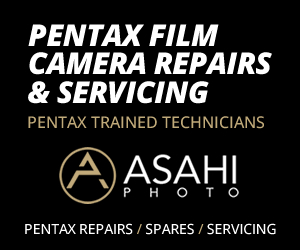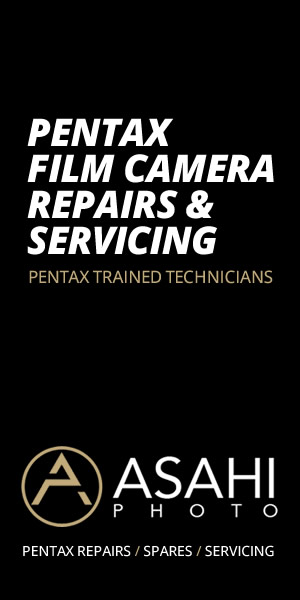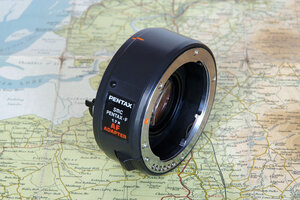Exposure
Posted 09/06/2007 - 18:39
Link
Your screen is probably uncalibrated. One thing about any display technology is that it will have a bias towards what colour temperature, hue balance, contrast, brightness and gamma that it displays. This will skew the image you see into something rather different to what it actually is.
The histogram is the number 1 tool to decide exposure, the screen is just a 'preview' as rendered by that device. You can calibrate by eye, which is hard because it varies with lighting and more. Secondly, you could buy a calibration device and software which would automatically profile and correct your display.
Oh, having a quick look at your photos only two seem a little underexposed to me, 'tranquil motion' and 'me and my shadow'.
EDIT: I do find that with the DA50-200 I need to 'overexpose' (using the meter) by up to one stop sometimes. This could be due to me using the wrong metering pattern/point though.
The histogram is the number 1 tool to decide exposure, the screen is just a 'preview' as rendered by that device. You can calibrate by eye, which is hard because it varies with lighting and more. Secondly, you could buy a calibration device and software which would automatically profile and correct your display.
Oh, having a quick look at your photos only two seem a little underexposed to me, 'tranquil motion' and 'me and my shadow'.
EDIT: I do find that with the DA50-200 I need to 'overexpose' (using the meter) by up to one stop sometimes. This could be due to me using the wrong metering pattern/point though.
Posted 09/06/2007 - 18:46
Link
Hi Tyr and thanks for your input. So you reckon I need to get one of these calibration devices and let it calibrate my screen?
That's one think I have been thinking about recently.
BUT, are you saying, after looking at some of my ephotozine images, that if I calibrate my screen, I will have less adjusting to do bearing in mind no other changes?
That's one think I have been thinking about recently.
BUT, are you saying, after looking at some of my ephotozine images, that if I calibrate my screen, I will have less adjusting to do bearing in mind no other changes?
Posted 09/06/2007 - 18:54
Link
I don't know how much you have edited those images. What you really need to do is upload an unmodified image and one that looks right on your screen. Then we can compare them and see if is the K10D underexposing or just your monitor which is too dark.
Do you have a CRT or an LCD display? CRTs can be calibrated using patterns and don't need a hardware sensor.
Do you have a CRT or an LCD display? CRTs can be calibrated using patterns and don't need a hardware sensor.
Posted 09/06/2007 - 19:35
Link
Display is a Claxan RX174T, 17.4" TFT LCD. Resolution is 1024x768. I could upload an unmodified RAW file to my .mac account.
Actually Tyr, just came back in from a walk, and I took several photos, as a test, I over-exposed by 1/3rd all of them. Result is they display lovely on screen the above monitor, and I would not have much to alter if anything.
Actually Tyr, just came back in from a walk, and I took several photos, as a test, I over-exposed by 1/3rd all of them. Result is they display lovely on screen the above monitor, and I would not have much to alter if anything.
Posted 09/06/2007 - 20:11
Link
Sometimes there is confusion about what the histogram shows. If every shot was adjusted to give a nice even histogram then shots of black cats in coal cellars would be grossly over-exposed. If there are lots of dark tones in a subject then there should be lots of dark pixels. The reverse is also true for high key images, where there are predominantly light tones.
I would suggest you forget the histogram as a means of checking exposre and concentrate on using the meter to evaluate the scene. Very simply, if the =scene is dark under-expose slightly and if the scene is bright over expose slightly. Most of the time centre-weighted or matrix metering will get pretty close with little or no input from the photographer.
I would suggest you forget the histogram as a means of checking exposre and concentrate on using the meter to evaluate the scene. Very simply, if the =scene is dark under-expose slightly and if the scene is bright over expose slightly. Most of the time centre-weighted or matrix metering will get pretty close with little or no input from the photographer.
Best regards, John
Posted 09/06/2007 - 20:19
Link
Tyr wrote:
Do you have a CRT or an LCD display? CRTs can be calibrated using patterns and don't need a hardware sensor.
Do you have a CRT or an LCD display? CRTs can be calibrated using patterns and don't need a hardware sensor.
using software solutions you get a rough calibration of a screeen, which is usable but using a hardware solution will yield much better results.
Camera:K20D|Ist*DS|Spotmatic II|MZ-10
Pentax Lenses: DA16-45|DA50-200|50A 1.7
Tamron Lenses: 28-200
Takumar Lenses: SMC 55 1.8
Sigma Lenses: EX DG 50-500 'Bigma'|EX 50mm Macro
Flashes: Metz 58 AF-1|Samsung SEF-36PZF|Pentax AF-220T
Pentax Lenses: DA16-45|DA50-200|50A 1.7
Tamron Lenses: 28-200
Takumar Lenses: SMC 55 1.8
Sigma Lenses: EX DG 50-500 'Bigma'|EX 50mm Macro
Flashes: Metz 58 AF-1|Samsung SEF-36PZF|Pentax AF-220T
Posted 09/06/2007 - 20:21
Link
Thanks John for the input.
What I wanted to get to, was the position where what I see on my monitor is pretty close to what I see on the K10d, by going out now and over-exposing every shot, I achieved what I had set out to do. Now of course, black cats and white horses, need other adjustments. But finally I feel I am on the right track to NOT spending more time than I have to at the computer.
What I wanted to get to, was the position where what I see on my monitor is pretty close to what I see on the K10d, by going out now and over-exposing every shot, I achieved what I had set out to do. Now of course, black cats and white horses, need other adjustments. But finally I feel I am on the right track to NOT spending more time than I have to at the computer.
Posted 09/06/2007 - 22:57
Link
you may want to adjust the brightness of th escreen on your k10,i knocked mine back -2 and now all looks well from camera screen to monitor to print. But calibrate your screen 1st.
One day you'll find, 10yrs have got behind you.
Posted 10/06/2007 - 06:12
Link
Betty,
I now did the same and took a test photo - K10d and screen image now are a lot closer. So thanks for your help. That is what I love about this forum. Full of knowledgeable people.
I now did the same and took a test photo - K10d and screen image now are a lot closer. So thanks for your help. That is what I love about this forum. Full of knowledgeable people.
Posted 10/06/2007 - 15:58
Link
bettyswolloks wrote:
..............now all looks well from camera screen to monitor to print. But calibrate your screen 1st.
..............now all looks well from camera screen to monitor to print. But calibrate your screen 1st.
That surely is the important point. I have never really worried about how the picture looks in-camera, concentrating instead on matching monitor to print - but then seeing the picture in print is , to me, the object of the exercise.
Keep up the good work
Graham
I'll think of something someday.
Graham
I'll think of something someday.
Posted 10/06/2007 - 17:04
Link
Well Old timer, this just goes to show what an overly complex world we live in! Seeing the picture in camera and following through to Mac for me is important because most of my photos go to a web-site or are viewed on Mac or TV - some are printed. So the exercise can be different things to different people.
However, I would say that if the image looks good in camera, then it is usually so that on computer you have a good image.
As I work with computers all day, I do not want to spend my evenings/nights on my Mac, so I prefer to get things as right as possible in camera, so I have less work to do later on with the computer.
However, I would say that if the image looks good in camera, then it is usually so that on computer you have a good image.
As I work with computers all day, I do not want to spend my evenings/nights on my Mac, so I prefer to get things as right as possible in camera, so I have less work to do later on with the computer.
Posted 11/06/2007 - 09:11
Link
I agree with all of the above but also the camera shows an embedded JPG prievew of the image using its own RAW conversion program. Hence (as far as I understand it) what you see on the cameras display is it's interpretation of the shot.
I do not know if the histogram is then taken from the RAW file or the JPG prievew file. If it's from the prievew then I wouldn't trust it.
Q does the histogram in Silkypix / PS etc.. match the on-camera histogram?
I do not know if the histogram is then taken from the RAW file or the JPG prievew file. If it's from the prievew then I wouldn't trust it.
Q does the histogram in Silkypix / PS etc.. match the on-camera histogram?
Old wood best to burn, old wine to drink, old friends to trust, and old authors to read.
Posted 11/06/2007 - 14:11
Link
Rodger Fooks wrote:
I agree with all of the above but also the camera shows an embedded JPG prievew of the image using its own RAW conversion program. Hence (as far as I understand it) what you see on the cameras display is it's interpretation of the shot.
I do not know if the histogram is then taken from the RAW file or the JPG prievew file. If it's from the prievew then I wouldn't trust it.
Q does the histogram in Silkypix / PS etc.. match the on-camera histogram?
I agree with all of the above but also the camera shows an embedded JPG prievew of the image using its own RAW conversion program. Hence (as far as I understand it) what you see on the cameras display is it's interpretation of the shot.
I do not know if the histogram is then taken from the RAW file or the JPG prievew file. If it's from the prievew then I wouldn't trust it.
Q does the histogram in Silkypix / PS etc.. match the on-camera histogram?
That is interesting. So if the histogram is taken from the jpg, then I would not trust that either, only using it as a guideline.
Posted 11/06/2007 - 15:12
Link
For an additional twist...
The luminance histogram isn't that helpful unless you've got the whitebalance right.
The RGB histograms are useful in the K10D to show whether you've clipped any of the channels, but ultimately you have to go by the output histogram in the RAW converter.
Apart from calibrating your monitor you also need pretty low-level ambient light (almost the level of lighting to snooze by ). Personally I've found there's almost nothing in the difference between LCD and PC (but then the PC is calibrated and my ambient lighting is low).
HTH!
Matt
The luminance histogram isn't that helpful unless you've got the whitebalance right.
The RGB histograms are useful in the K10D to show whether you've clipped any of the channels, but ultimately you have to go by the output histogram in the RAW converter.
Apart from calibrating your monitor you also need pretty low-level ambient light (almost the level of lighting to snooze by ). Personally I've found there's almost nothing in the difference between LCD and PC (but then the PC is calibrated and my ambient lighting is low).
HTH!
Matt
http://www.mattmatic.co.uk
(For gallery, tips and links)
(For gallery, tips and links)
Add Comment
To leave a comment - Log in to Pentax User or create a new account.







322 posts
18 years
Switzerland
Here we go.
I take RAW, Auto white balanced photos only with my K10d, in manual mode, using a 40/21 or 70 Limited lens, I adjust the exposure by changing aperture or speed and then check the histograms and most photos are at 100ASA. In camera the images look bright, and I am happy with them.
Upload to my computer open with either iPhoto, Silky Pix Studio, Adobe Elements or Extensis Portfolio. All images are dark looking, i.e. seemingly under-exposed. Yet in camera, when I take the meter reading, I am careful to set that at the middle point, i.e. not over or under exposing.
Of course, because I am using RAW, white balance etc etc can be fixed.
I suppose my question is this. By manually doing the exposure, I expected to have less and nor more work to do on the computer. I am therefore puzzled that I need to adjust the levels and the brightness in particular for virtually every shot.
What do you think I am doing wrong? You can see some images on :-
http://www.ephotozine.com/u41221, although these have been resized to 60kb and had levels adjusted and brightness levels and other adjustments made.
I would really appreciate answers on my "problem", so look forward to hearing from you all.